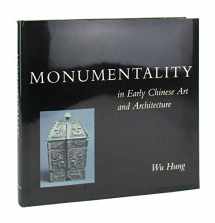
Monumentality in Early Chinese Art and Architecture
Book details
Summary
Description
Chinese decorative, pictorial, and architectural forms, often approached as separate traditions, are here explained as a broad artistic movement and contextualized as part of a well-defined cultural and political tradition. The book begins with the first comprehensive explanation of "ritual art." This native genre encompasses ceremonial pottery, jades, and bronzes, which, though often small and hidden, manifest a unique sense of the monumental. The author traces the decline of this archaic tradition and the corresponding rise of palatial and funerary monuments against the background of China's transition from a network of principalities to a unified political state.
He portrays the continual reinvention of the city in China as he analyzes the history of the Western Han capital, Chang'an, and brings to life the individual motives of builder, mourner, and deceased in discussing the unprecedented construction and decoration of mortuary monuments during the Eastern Han. The book concludes by reexamining what is arguably the most important event in Chinese art history: the appearance of individual artists during the post-Han period and their transformation of public monumental art into a private idiom.


We would LOVE it if you could help us and other readers by reviewing the book
Book review



